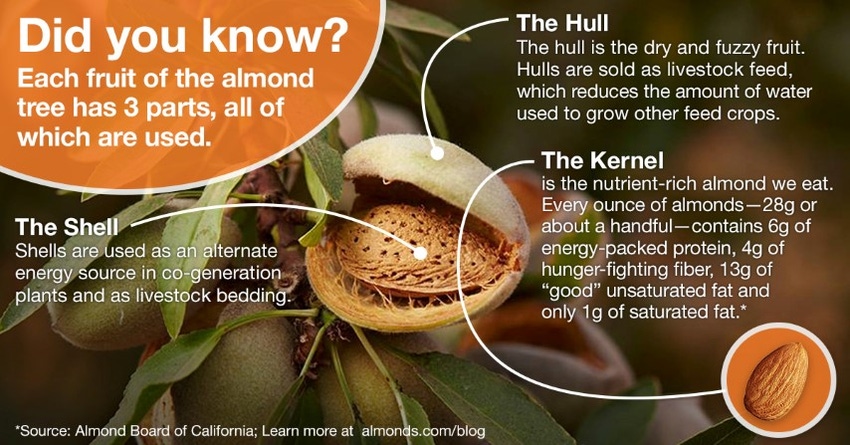
Sharing good news through Almond Board programs
Proactive media outreach aims to provide correct information about almonds through meetings with reporters, orchard tours, and expert interviews.Resulting media coverage has delivered industry messages on bee health, water efficiency, family farming, and the economic value of almonds.
June 2, 2015

One result of the success and size of the California almond industry is that water use has come under increasing public, media, and government regulatory attention throughout California and around the world.
Often, what has been reported is incomplete or inaccurate.
The Almond Board of California has a dedicated team, working on behalf of all almond growers, to help ensure accurate information is reported. This is accomplished reactively by correcting misinformation through letters to the editor, direct follow-up with reporters and journalists, comment section postings, and more.
Proactive media outreach aims to provide correct information before inaccuracies can be reported. This strategy includes meeting directly with reporters, orchard tours, and expert interviews.
Resulting media coverage has delivered industry messages on bee health, water efficiency, family farming, and the economic value of almonds.
None of this, however, would be possible without grower participation in the California Almond Sustainability Program (CASP) and Good Neighbor spokespeople.
CASP Generates Statistics
To date, information gathered through CASP has provided critical statistics to counter often erroneous reporting on water use in almonds. CASP helps rebut misconceptions to be able to say with statistical certainty, for instance, that 83 percent of almond growers use some combination of weather, soil moisture, and tree demand to determine irrigation strategies rather than watering on a predetermined schedule.
Participation in CASP by a broad cross-section of California almond growers and processors continues to be important to understanding on-the-ground grower and processor practices. This in turn will accurately portray California almond production to buyers and consumers in the future.
As the California almond industry continues to improve and adopt new efficient and sustainable practices, continued participation in CASP is vital to illustrating industry advancement.
Participation is not only about documenting what almond growers actually do in their operations. It is also a great way to step back and reflect on all of the management choices an almond grower is making day to day.
Growers who have taken the time to fill out the self-assessments - either online or by filling out modules on paper - said they have learned something in the process. The questions encourage growers to reflect about their own operations, and there are numerous callouts directing them to learn more about certain practices.
Good Neighbors
The premise of the Good Neighbor program is simple: No one tells the story of California almonds better than those who work every day growing and processing almonds.
Good Neighbor spokespeople have opened their orchards to inquisitive reporters and set the record straight about how almonds are produced.
These almond growers are not sitting back and letting others define who they are. They are actively sharing with the public how almond-growing practices continue to evolve using 21st century technologies to farm efficiently and sustainably.
These positive Good Neighbor stories are leveraged outside of their immediate local audiences with story links posted on various social media platforms, including the Almond Board’s blog - Almonds.com/Blog.
As summer unfolds, almond growers and processors will continue to be asked by friends, neighbors, and coworkers about water. To answer those questions, the Almond Board has created infographics, fact sheets, and quick-share graphics for sharing on social media that detail water use in almonds.
All of these tools are available at Almonds.com/Water, and can be used in conversations about almonds and the drought as well as shared on social media.
With its long-standing commitment to research and innovation, the California almond industry will continue to thrive as a leader in California agriculture. However, responding to the scrutiny that leadership brings requires a united voice and well-researched facts.
Given the tools and opportunities provided, each almond grower and processor, along with all California farmers, has the responsibility to address this challenge by telling your story, sharing the facts about agriculture, and committing to an innovative and sustainable future.
Almond growers who want to help share good news about the California almond industry can participate in CASP by contacting Jenny Nicolau at [email protected].To become a spokesperson in the Good Neighbor Program, contact Carissa Sauer at [email protected].
You May Also Like



